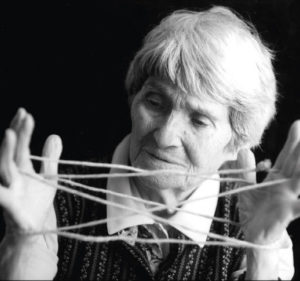“All’essere umano non basta la terra sotto i piedi, non basta il sole sulla testa. L’uomo diventa adulto per realizzarsi oltre il proprio spazio e il proprio tempo”. Maria Lai
A distanza di un mese dalla riapertura della Stazione dell’Arte, il 26 giugno 2020 apre al pubblico il nuovo allestimento della collezione permanente dal titolo Maria Lai. Fame d’infinito. Arte da vedere, sentire, toccare: mai come in occasione del nuovo allestimento, le opere di Maria Lai attraverseranno ogni barriera fisica e intellettuale. Una mostra che è esperienza multisensoriale, concepita per favorire un nuovo approccio all’arte e nutrire la curiosità dei visitatori. Per soddisfare la nostra “Fame d’infinito”, l’esposizione recupera il dialogo diretto con il pubblico dopo lo stop per l’emergenza sanitaria e la riapertura dell’istituzione museale, avvenuta un mese fa.
La nuova esposizione aprirà al pubblico venerdì 26 giugno 2020, alle ore 15.00, negli spazi del museo fortemente voluto dall’artista ulassese, in piena sicurezza e nel rispetto delle indicazioni fornite dalle autorità preposte: ingressi contingentati (per un massimo di 10 persone alla volta) e mascherina obbligatoria.
La mostra è organizzata dalla Fondazione Stazione dell’Arte con il sostegno della Regione Autonoma della Sardegna, del Comune di Ulassai e della Fondazione di Sardegna. Curata da Davide Mariani, direttore del museo dedicato a Maria Lai, Fame d’infinito scandisce l’intero percorso dell’artista attraverso l’esposizione delle opere più significative da lei donate al Comune di Ulassai. La collezione restituisce, nella sua totalità, l’esperienza creativa di Maria Lai: dalle sculture ai disegni a matita e su china, dai telai alle tele cucite, dai celebri pani ai libri cuciti, dalle geografie alle installazioni e agli interventi ambientali.
Il progetto espositivo, concepito come un’esposizione permanente, è suddiviso secondo un ordine cronologico e tematico ed è arricchito dalla presenza di un sistema di apparati didattici, in italiano e in inglese, da alcune riproduzioni tattili dei manufatti in mostra e da un archivio multimediale interattivo.
MARIA LAI. FAME D’INFINITO
a cura di Davide Mariani
Museo Stazione dell’Arte
Ex Stazione ferroviaria, Ulassai (Nu)
Orari: dal martedì alla domenica, dalle 9:30 alle 19:30 (orario continuato) – ingressi contingentati
Chiusura settimanale: lunedì
Visite guidate: sospese
Per informazioni: Tel. 0782787055; e-mail: stazionedellarte@tiscali.it










